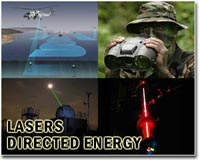 |
Paris (AFP) May 31, 2009 French physicists said on Sunday they had used ultra-fast lasers that could accelerate storage and retrieval of data on hard discs by up to 100,000 times, pointing the way to a new generation of IT wizardry. The research builds on achievements that earned the 2007 Nobel physics prize for Albert Fert of France and Peter Gruenberg of Germany, who ushered in a revolution in miniaturised storage in the 1990s. Fert and Gruenberg discovered that tiny changes in magnetic fields can yield a large electric output. These differences in turn cause changes in the current in the readout head that scans a hard disk to spot the ones and zeroes in which data is stored. That discovery opened the way to "spintronics", a form of electronics that uses not only electrical charge but also the spin of electrons in individual atoms to provide a more compact, denser storage on hard drives. But reading and writing data through spintronics has been hampered by the relative slowness of magnetic sensors. In a study published in the specialist journal Nature Physics, a team led by Jean-Yves Bigot of the Institute of Materials Physics and Chemistry in Strasbourg employed a "femtosecond" laser, using ultra-fast bursts of laser light, to alter electron spin and thus speed up retrieval and storage. "Our method is called the photonics of spin, because it is photons [particles of light] that modify the state of the electrons' magnetisation" on the storage surface, Bigot told AFP. Data is retrieved with a burst that lasts just a millionth of a billionth of a second, said Bigot. Femtosecond lasers currently measure around 30 centimetres (12 inches) by 10 centimetres (four inches) which means they are too big for consumer electronics, he cautioned. Bigot added, though, that their miniaturisation is likely to be achieved over the next decade. IBM, Hitachi and other corporations are "extremely interested" by the research, Bigot said. Share This Article With Planet Earth
Related Links Space Technology News - Applications and Research
 World's largest laser built in California
World's largest laser built in CaliforniaLivermore, Calif. (UPI) Mar 31, 2009 The U.S. Department of Energy says the National Nuclear Security Administration has certified the completion of the world's largest laser. Located at the Lawrence Livermore National Laboratory's National Ignition Facility in California, the laser is expected to allow scientists to achieve fusion ignition in the laboratory, obtaining more energy from the target than is provided by the la ... read more |
|
| The content herein, unless otherwise known to be public domain, are Copyright 1995-2009 - SpaceDaily. AFP and UPI Wire Stories are copyright Agence France-Presse and United Press International. ESA Portal Reports are copyright European Space Agency. All NASA sourced material is public domain. Additional copyrights may apply in whole or part to other bona fide parties. Advertising does not imply endorsement,agreement or approval of any opinions, statements or information provided by SpaceDaily on any Web page published or hosted by SpaceDaily. Privacy Statement |